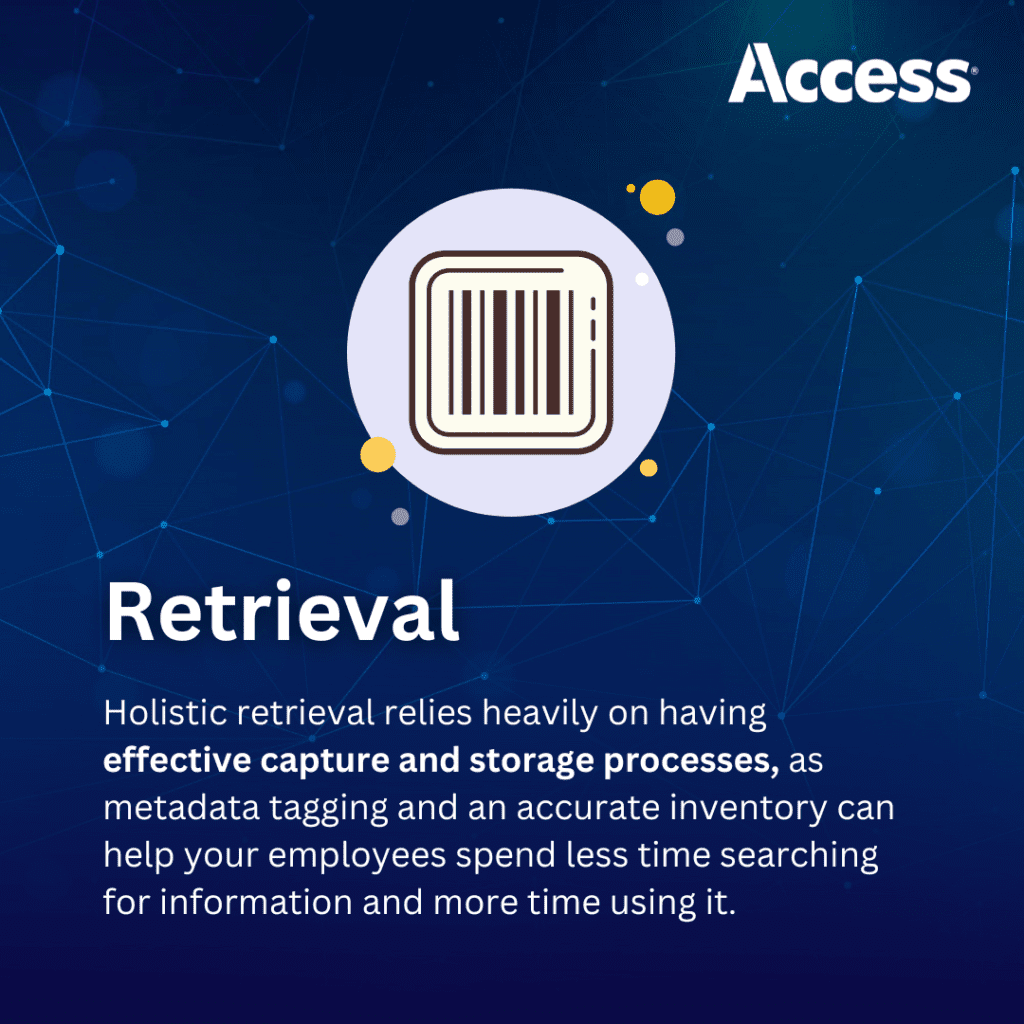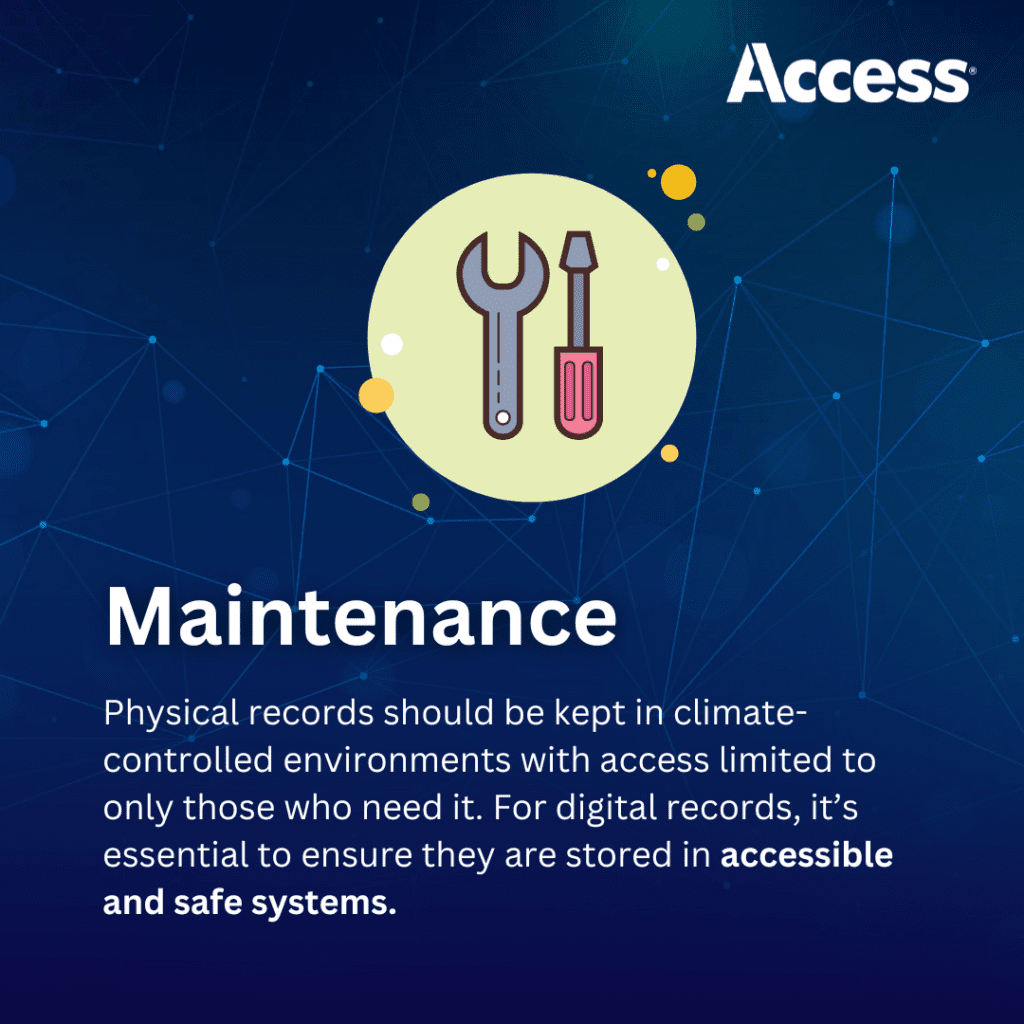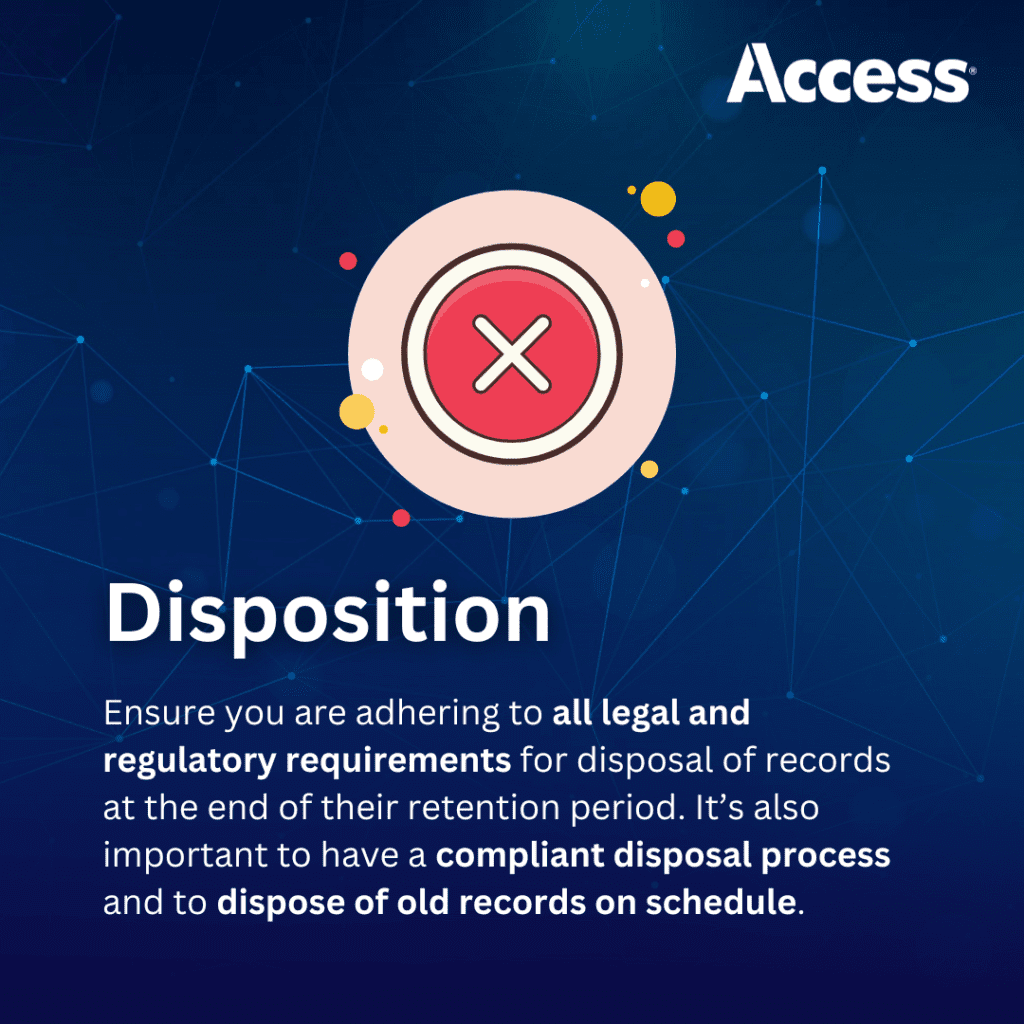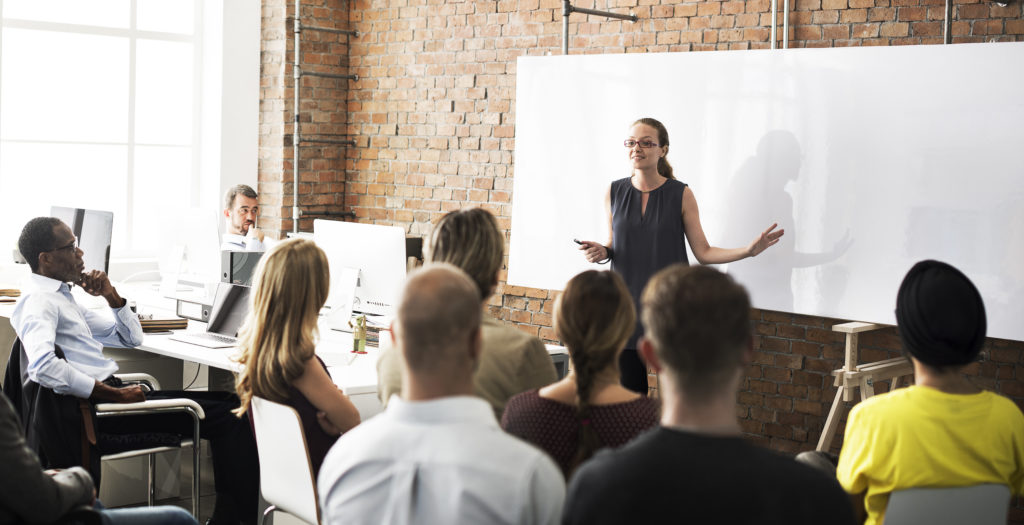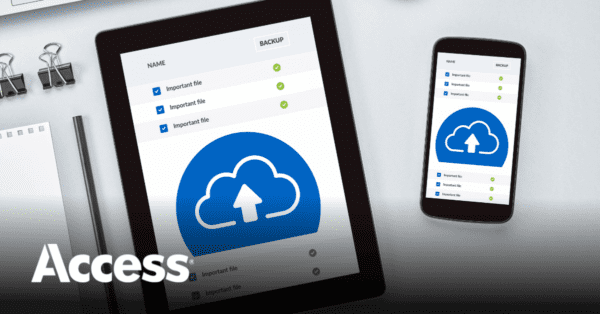
By understanding the information lifecycle and evaluating your organization’s information holistically, you’ll be able to ensure information is optimally maintained and secured.
In the first part of this two-part series, we covered the capture and storage parts of the information lifecycle. This post will focus on the later parts of the information lifecycle— retrieval, maintenance, and disposition.
Retrieval
Today, it is impossible for businesses to function without the ability to communicate and share information securely and seamlessly. Researchers discovered that an average office worker spends several hours per week searching for information, and almost 20% of the time spent on document-related tasks is spent searching for information that can’t be found. This adds up to about 120 hours per year spent searching for information.
Our coworkers may no longer be a cubicle or two away. Similarly, the physical records you need may be a few states or even time zones away. This makes it even more important to provide visibility and access to all the information your employees need regardless of where they’re working from.
Easier retrieval relies heavily on having effective capture and storage processes as metadata tagging and an accurate inventory can help your employees spend less time searching for information and more time using it.
Maintenance
This portion of the information lifecycle is focused on maintaining and preserving records and information to ensure its accessibility. Depending on the media type, this may play out in two ways.
If the documents are stored in a physical format, it means ensuring they are kept in such a way that not only ensures their viability but also controls the chain of custody. Physical records should be kept in an environment that limits access by people who shouldn’t have access to them and is climate-controlled so that the records are not affected by the variations of weather.
Likewise, if they’re stored digitally, it’s important to ensure they are in systems that are accessible and secure. Many organizations are dealing with legacy records that are stored in systems that are no longer used for their original purpose and are instead a repository for business-critical records that the organization can’t do without.
These records are “stranded” in those systems and steps should be taken to make sure they’re ported over to platforms that can house them securely and in a more easily accessible manner.

5/7 Leveraging Your Data: A Journey Through 3 Essential Information Gates
Join our upcoming webinar, where we will guide you through the essential steps to be successful in the age of digital information. The Three Gates to Digital are your roadmap to harnessing the power of technology, improving efficiency, and achieving…
Disposition
What to do with records once they’ve reached the end of their retention period relies heavily on all the stages that come before.
Failure to properly dispose of records containing personally identifiable information (PII) can make it all the worse should a data breach occur.
If you don’t know what is stored where or how long it needs to be kept, your organization could be at risk for violating the ever-increasing number of privacy and retention laws and regulations that have taken effect in recent years. By adhering to the legal and regulatory requirements for record disposal, organizations can ensure that they are protecting themselves and their clients from potential risks.
Additionally, disposing of records in a compliant way can also help organizations manage their storage space effectively and reduce the costs associated with storing and maintaining records over time. By disposing of records that are no longer needed, organizations can free up valuable space and resources that can be used for more important tasks.
Conclusion
By managing records and information holistically, companies can approach information management in a manner that ensures all aspects of the program are considered. The result will promote collaboration and communication among different departments and stakeholders, ensuring that information is shared and used optimally.
For more information on building a holistic records and information management program, check out our roadmap on how to get there no matter where you are starting from.

